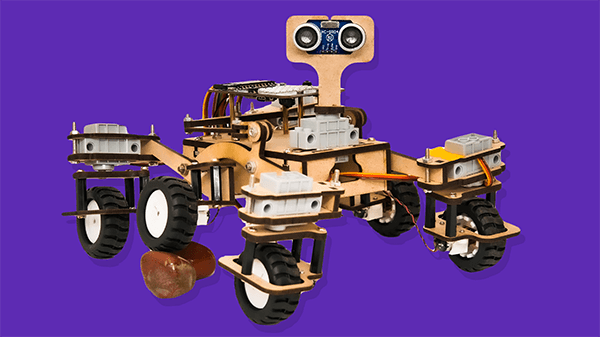Introduction
Mars is a big, red planet that is very far away from Earth. It is the fourth planet from the Sun, and it is the second smallest planet in the Solar System.

Mars is home to a lot of interesting features, like volcanoes, mountains, and canyons. It also has an atmosphere with clouds, wind, and dust storms. The red color of Mars comes from iron oxide in its soil. Scientists think that Mars may have had water on it in the past, but now it is a very dry and cold place.

Exploring Mars is important because it can help us to understand more about the history of our own planet, Earth. It can also help us to understand the formation of other planets in the universe, and help us to learn about the possibility of life on other planets. Additionally, by exploring Mars, we can gain valuable insights into the potential for human habitation and the potential for future space exploration.
Mars Rovers
Mars rovers are robotic vehicles that are used to explore the surface of Mars. They are designed to traverse the planet’s terrain, collect scientific data, and send back images of the Martian surface.
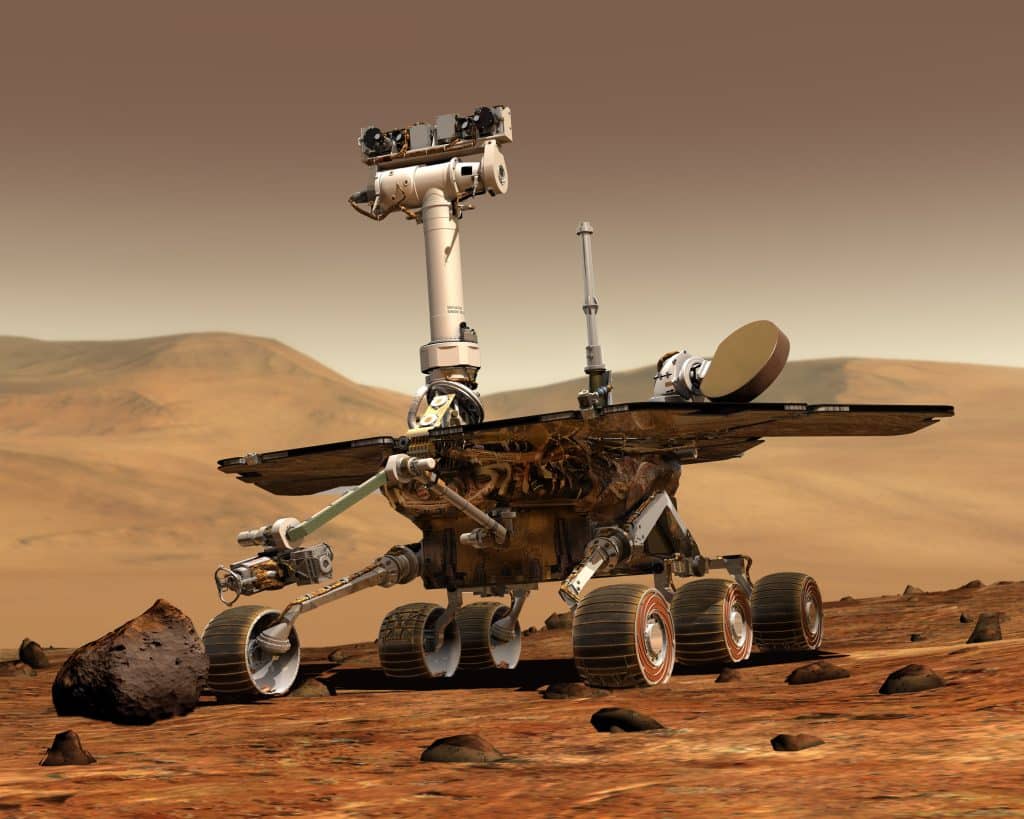
The use of rovers on Mars has enabled scientists to gain a better understanding of the planet’s geology and environment. Rovers have been used to study the composition and distribution of rocks, soils, and minerals, as well as to map the Martian surface. The rovers have even been instrumental in the search for evidence of past or present life on Mars. They are also used to search for potential landing sites for future human missions.
NASA and Its Mars Missions
NASA stands for the National Aeronautics and Space Administration. It is a U.S. government agency responsible for leading the nation in space exploration and aeronautical research. NASA’s Mars program is responsible for the robotic exploration of the Red Planet from Earth. It includes flybys, orbiters, landers, rovers, and sample return missions. The program’s goals are to search for evidence of past or present life on Mars, to characterize the climate and geology of the planet, and to prepare for human exploration.

Following are all the Mars Missions executed by NASA to date:
| # | Mission Name | Image |
| 1 | Mars Pathfinder (1996):
The Mars Pathfinder mission was to explore the surface of Mars. It was the first successful mission to land a robotic rover on the surface of Mars. The spacecraft consisted of a lander and a robotic rover called Sojourner. The rover, Sojourner, was equipped with a camera, a spectrometer, and an alpha particle X-ray spectrometer to analyze the composition of rocks and soil. |
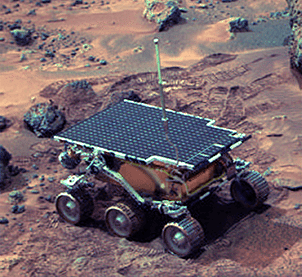 |
| 2 | Mars Exploration Rovers (MERs) (2003):
The Mars Exploration Rover mission (MERs) was composed of two robotic rovers, Spirit and Opportunity. The rovers were sent to explore the surface of Mars and search for evidence of past water activity. Each rover was equipped with an array of scientific instruments. The mission gathered data on the climate and geology of Mars, and sent back images of the Martian landscape. |
 |
| 3 | Mars Phoenix (2008):
The Mars Phoenix mission was launched in August 2008 to search for evidence of past or present water on the surface of Mars. The spacecraft consisted of a lander equipped with a robotic arm, a camera, and an array of scientific instruments. The lander was able to dig into the soil to search for evidence of water-ice and organic material. |
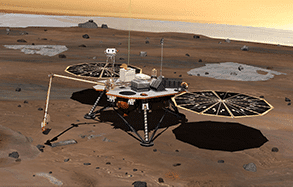 |
| 4 | Curiosity Rover (2011):
The Curiosity rover mission was launched in November 2011 to explore the surface of Mars and search for evidence of past or present habitability. The rover was equipped with an array of scientific instruments including cameras, spectrometers, and an alpha particle X-ray spectrometer. It also analyzed samples of the Martian soil and rocks for signs of organic compounds. |
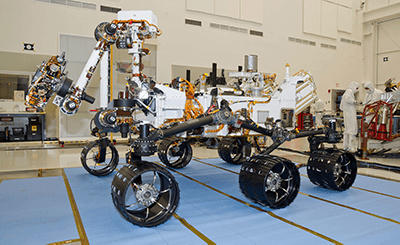 |
| 5 | Mars 2020 (2020):
The Mars 2020 mission was launched in July 2020 to search for evidence of past or present habitability on the surface of Mars. The spacecraft consists of a robotic rover, Perseverance, equipped with an array of scientific instruments including cameras, spectrometers, an X-ray spectrometer, and a drill that can collect and analyze samples of the Martian soil and rocks. The mission will also deploy a small helicopter, Ingenuity, which will be used to take aerial images of the Martian surface. The mission is expected to gather data on the climate and geology of Mars, and send back images of the Martian landscape. |
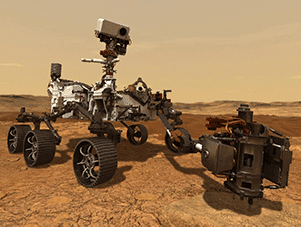 |
Components of Mars Rover
- Chassis: This is the frame of the Rover, which houses all the components and carries the Rover on its journey.
- Motors and Wheels: Motors provide the power and the wheels provide the movement.
- Suspension System: This helps the Rover to move smoothly over rugged terrain.
- Control System: This system helps the Rover to respond to commands and navigate autonomously.
- Computer System: This onboard computer system helps the Rover to process and store data, as well as communicate with Earth.
- Sensors: Sensors allow the Rover to gather data about its environment.
- Communication System: This system allows the Rover to send data back to Earth.
- Power System: This system provides the necessary power for the Rover to function.
Quarky Mars Rover
Quarky Mars Rover is a miniature version of Mars Rovers sent to Mars by NASA. With the Quarky Mars Rover, you can learn about robot mechanisms, control, and AI-based applications by assembling and programming the robot. The kit is compatible with Quarky Board and includes 10+ activities.

Rocker Bogie Mechanism
Rocker-bogie suspension is a type of mobility system that is used in Mars Rovers. It consists of an arm-like structure with two independently-suspended, wheeled “bogies” connected to the arm. The bogies are mounted on rocker arms that allow the system to move up and down, side to side and rotate, allowing the rover to traverse a variety of terrain.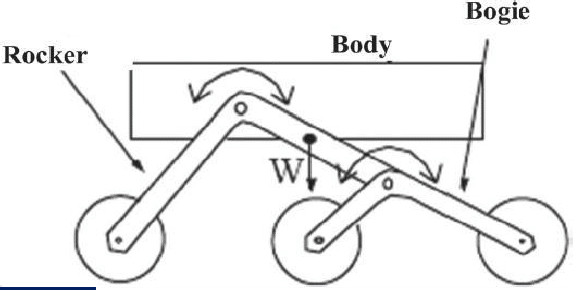
The rocker-bogie system also provides a stable platform for the instruments mounted on the rover. This system is used to maximize the rover’s maneuverability and stability, allowing it to navigate through complex terrain and obstacles on the Martian surface.
Climbing


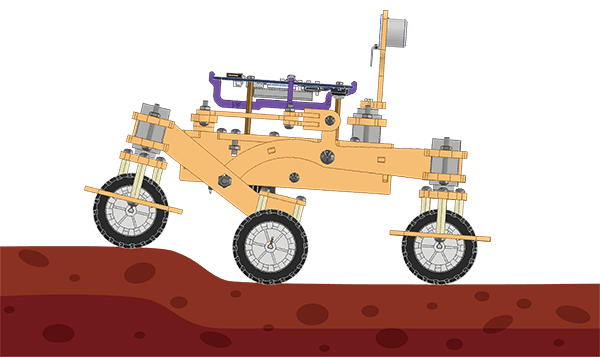 Obstacle
Obstacle
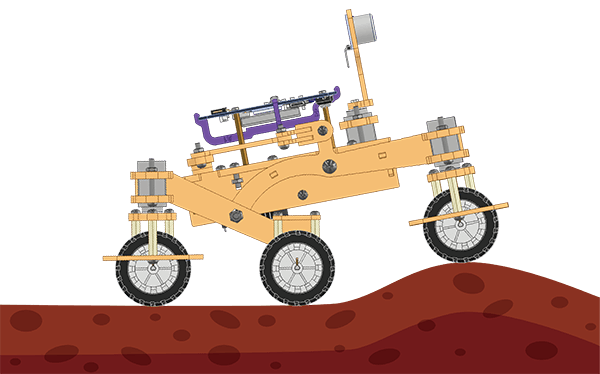
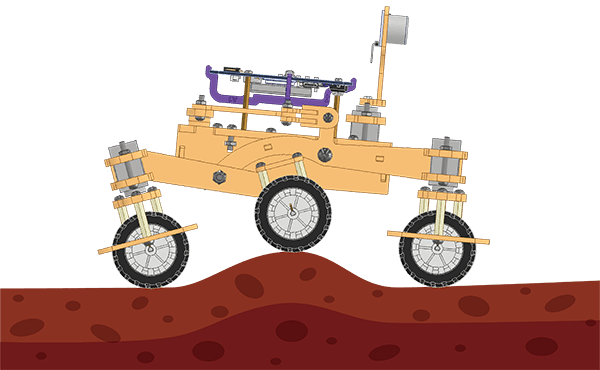
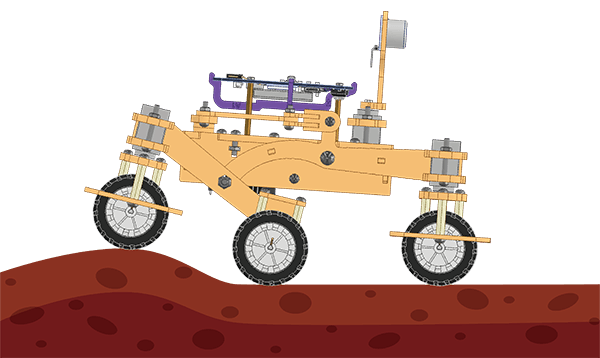
Conclusion
In conclusion, Mars is a fascinating planet that has been explored by robotic rovers sent by NASA. The rovers use a rocker–bogie mechanism to traverse the terrain and gather scientific data. Quarky Mars Rover is a miniature version of the Mars Rovers that can be used to learn about robot mechanisms, control, and AI–based applications. Exploring Mars is important because it can help us to understand more about the history of our own planet, Earth, and the potential for future space exploration.

